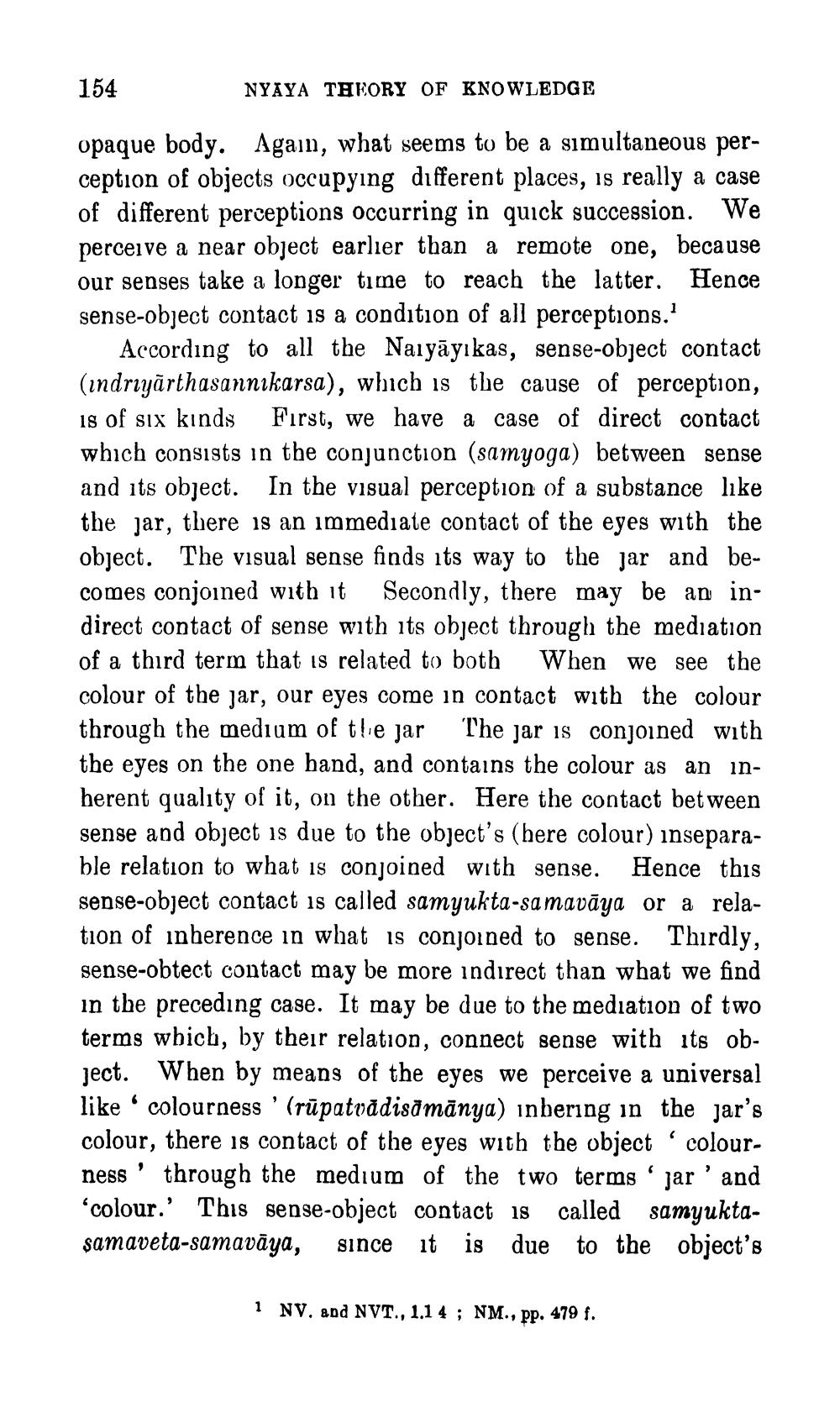________________
154
NYAYA THEORY OF KNOWLEDGE
opaque body. Again, what seems to be a simultaneous perception of objects occupying different places, is really a case of different perceptions occurring in quick succession. We perceive a near object earlier than a remote one, because our senses take a longer time to reach the latter. Hence sense-object contact is a condition of all perceptions.1
According to all the Naiyayikas, sense-object contact (indriyarthasannikarsa), which is the cause of perception, is of six kinds First, we have a case of direct contact which consists in the conjunction (samyoga) between sense and its object. In the visual perception of a substance like the jar, there is an immediate contact of the eyes with the object. The visual sense finds its way to the jar and becomes conjoined with it Secondly, there may be an indirect contact of sense with its object through the mediation of a third term that is related to both When we see the colour of the jar, our eyes come in contact with the colour through the medium of the jar The jar is conjoined with the eyes on the one hand, and contains the colour as an inherent quality of it, on the other. Here the contact between sense and object is due to the object's (here colour) inseparable relation to what is conjoined with sense. Hence this sense-object contact is called samyukta-samavāya or a relation of inherence in what is conjoined to sense. Thirdly, sense-obtect contact may be more indirect than what we find in the preceding case. It may be due to the mediation of two terms which, by their relation, connect sense with its object. When by means of the eyes we perceive a universal like colourness' (rūpatvādisāmānya) inhering in the jar's colour, there is contact of the eyes with the object' colourness through the medium of the two terms' jar' and 'colour.' This sense-object contact is called samyuktasamaveta-samavāya, since it is due to the object's
9
1 NV. and NVT., 1.14; NM., pp. 479 f.




